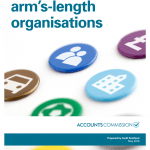Content

So for now while it may be convenient for keeping track of my direct expenses it’s very limited due to the problems I am having. It helps freelancers keep track of income and expenses, as well as calculate and pay estimated quarterly taxes. However, it does have a few bookkeeping capabilities that give many small freelancers the information they need.

It is not the vendor or bank advertiser’s responsibility to ensure all posts and/or questions are answered. QuickBooks Self-Employed has three pricing plans ranging from $15-$35/month. LiveFlow’s Google Sheets Add-On is an easy-to-use tool to help you bring your financial data into your Google Sheet in a matter of seconds. E-Tech is the #1 Quickbooks data migration and Conversion service provider.
How do I change my business from a sole proprietorship to an LLC in Quickbooks
With Quickbooks Self-Employed, you’ll have a detailed record of all your trips. With the mobile app, you can even automate business mileage tracking. In addition, the site’s excellent companion apps could serve many of today’s mobile entrepreneurs—who tend to live on their phones—well. Like other Intuit financial applications, Intuit QuickBooks Self-Employed uses an easily understandable quickbooks for sole proprietor navigation system and offers an exceptional user experience. The interface is consistent across desktop and mobile platforms too, so it’s an attractive choice if you want this kind of interoperability. QuickBooks Self-Employed is best suited for freelancers, solopreneurs and consultants who want an easy-to-use online accounting tool to keep track of their business’s finances.
Can I use QuickBooks for myself?
QuickBooks Self-Employed helps track your income, expenses, mileage, and tax info. You may access your accounts from a web browser or the mobile app. Your data syncs in both places.
However, if you anticipate outgrowing QuickBooks Self-Employed, we suggest that you go straight to QuickBooks Online. QuickBooks Self-Employed allows you to classify income and expenses using categories that align with the IRS Schedule C, such as utilities, legal fees, and commissions. Once this information is entered, you can view and print a summary of your taxable income and expenses, which can take some of the guesswork out of filing your taxes. If your plan doesn’t include the Tax Bundle, you can use this summary to input your Schedule C information into a tax program of your choice manually.
Additional Member Benefits
Its basic invoices and receipt-scanning features help you charge clients and keep your finances in order. The service provides a user experience rivaled only by that of FreshBooks, and its automatic mileage tracking may appeal to frequent business travelers. Beyond that and the income tax help, though, there’s really no compelling reason to go with Intuit QuickBooks Self-Employed. Many sole proprietors could get by with FreshBooks’ $13.50-per-month level, which is less than Intuit QuickBooks Self-Employed’s regular price.
- QuickBooks Self-Employed is designed to help freelancers and sole proprietors keep tabs on income, expenses and tax obligations.
- So, for example, if you have an e-Commerce store through Shopify, this accounting solution is an ideal option.
- However, despite these strengths, the site isn’t as capable as other accounting websites aimed at similar markets.
- Using this feature to properly categorize expenses in advance takes some of the stress and guesswork out of filing your taxes.
What are the limitations of QuickBooks Self-Employed?
One of the main limitations of QuickBooks Self-Employed is that it is not designed for businesses with employees or inventory. Additionally, QuickBooks Self-Employed lacks some of the advanced features that are available in QuickBooks Online, such as inventory management and project tracking.
